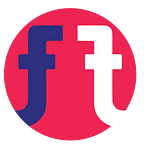PowerTools Program Removes Barriers by Sharing Stories of GBV Throughout Russia
By Kathryn Weenig, MSW
“Storytelling is power. It makes you feel this power from the inside,” said a participant after taking part in our PowerTools program.
This spring, we (Footage) launched PowerTools with funding from the U.S. Embassy in Moscow, offering online trainings on storytelling as a tool for organizations and collectives working with young women at risk of experiencing gender-based violence (GBV) throughout Russia’s Core Region and Siberia.
Another participant shared, “Each and every one of us works in their own town or their city, and sometimes, you think you’re all alone in the world and no one else is dealing with this problem, and you wonder if there are any other people like us, and here, we were shown opportunities.”
In March of 2020 — the onset of lockdowns and shelter-in-place orders during the COVID-19 pandemic — the ANNA Center for the Prevention of Violence in Russia reported a 25% increase in domestic violence crisis calls (NY Times). Indeed, United Nations Population Fund correlates the pandemic with millions of new GBV cases worldwide. United Nations Secretary General António Guterres calls on governments to address the “horrifying global surge in domestic violence” in their national response plans to COVID-19, yet countries struggle to provide resources (NY Times).
While GBV impacts all girls and women, young women are a particularly vulnerable population. According to the World Health Organization, at least 19–66% of women ages 15–24 worldwide have experienced physical and/or sexual violence.
“The ANNA Center for the Prevention of Violence in Russia reported a 25% increase in domestic violence crisis calls.”
Through PowerTools, Footage’s goal was to respond to the increase in GBV and dearth of resources by building upon our award-winning Girl-talk-Girl and WebinHERS programs. These programs have used technology and storytelling to bring young women and organizations from the U.S. and Russia together to raise awareness of GBV. They consider GBV as contextual — woven into the physical, social, cultural, and economic landscapes of people’s lives — as well as intersectional — compounded by the myriad intersecting aspects of people’s identities: their race, ethnicity, ability, age, and socioeconomic status. Measured impact of Footage’s programming demonstrates that incorporating local storytelling into educational programming on such issues as GBV improves outcomes for individuals and communities.
“You think you’re all alone in the world and no one else is dealing with this problem, and you wonder if there are any other people like us, and here, we were shown opportunities.”
For PowerTools, we had two target outcomes:
- Participants report an increase in education and access to useful information on GBV.
- Participants report an increased ability to educate, advocate, and spread awareness on GBV.
“Storytelling is power.”
In surveys, interviews, and focus groups, participants reported that both outcomes were achieved:
94% of participants reported increased awareness of definitions and experiences of GBV. 80–100% of participants agreed that PowerTools expanded their opportunities related to GBV.
One participant said, “I also became more aware of other organizations that help women and the specifics of their work. This helps me in orienting people who need some kind of specific help or informational support.”
88% of participants reported feeling more capable of understanding people’s stories and facilitating storytelling on GBV.
“For me, storytelling is practically a matter of life. After this course, I feel more in demand in this sense. I feel connected with the community of people who do this too. And I have more hope that I can benefit both people and myself through my penchant for storytelling and helping others tell stories,” said a participant.
100% of participants agreed they were ready to lead PowerTools activities with their own organizations and they will use lessons from PowerTools in their communities.
One participant reported, “Since we introduced the methods, the community has begun to respond with more interest to our content, and girls have become more involved in solving the problem of violence.”
Qualitative analysis of participant feedback revealed that PowerTools methods allowed people to open up, provided a safe space, demonstrated the impact of storytelling, provided effective and interactive learning, and built community. All of these outcomes connect to Footage’s five Drivers of Change, which include 1) compassion and empathy, 2) community and connection, 3) education, 4) awareness, and 5) advocacy.
“Girls have become more involved in solving the problem of violence.”
Another participant shared, “For me, this is an interesting experience in terms of removing some kind of barrier, sharing stories, some kind of fear. I think this is very important, because this exchange of stories, it is very multifaceted and allows you to understand the experience of other people, something that someone has not encountered, [you] can feel and understand how it is — empathy, compassion, interconnection, all these things, and exercises kick it off.”
To learn about the needs assessment we conducted with organizations and collectives throughout Russia prior to providing the PowerTools online trainings, read “PowerTools Training in Russia Starts with Participant Needs.”
